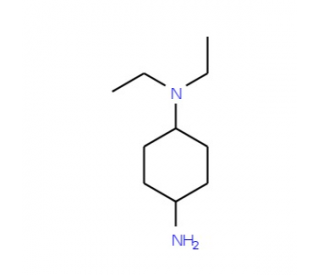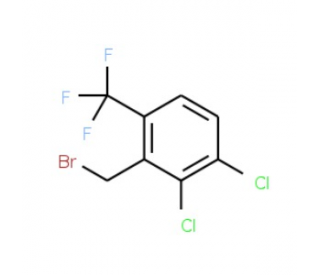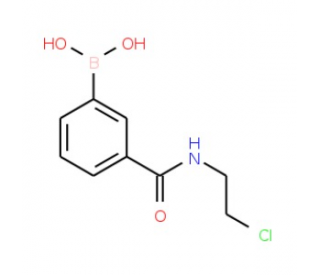詳細(xì)說(shuō)明
Purity
>95%, by SDS-PAGE with silver staining
Endotoxin Level
<0.10 EU per 1 μg of the protein by the LAL method.
Activity
Measured by its ability to inhibit the TNF-alpha mediated cytotoxicity in the L?929 mouse fibroblast cells in the presence of the metabolic inhibitor actinomycin D. Matthews, N. and M.L. Neale (1987) in Lymphokines and Interferons, A Practical Approach. Clemens, M.J. et al. (eds): IRL Press. 221. The ED 50 for this effect is 0.4-2.4 ng/mL in the presence of 0.1 ng/mL of Recombinant Rat TNF? alpha (Catalog # ).
Source
Mouse myeloma cell line, NS0-derived
Rat TNF RII/TNFRSF1B
(Val23-Gly258)
Accession # Q80WY6IEGRMDP Mouse IgG2
(Glu98-Lys330)N-terminus C-terminus Accession #
N-terminal Sequence
AnalysisVal23
Structure / Form
Disulfide-Linked Homodimer
Predicted Molecular Mass
52 kDa
SDS-PAGE
62-85 kDa, reducing conditions
8348-R2 |
| |
Formulation Lyophilized from a 0.2 μm filtered solution in PBS. | ||
Reconstitution Reconstitute at 500 μg/mL in sterile PBS. | ||
Shipping The product is shipped at ambient temperature. Upon receipt, store it immediately at the temperature recommended below. | ||
Stability & Storage: Use a manual defrost freezer and avoid repeated freeze-thaw cycles.
|
Background: TNF RII/TNFRSF1B
Tumor Necrosis Factor Receptor II (TNF RII), also known as TNFRSF1B, p75/p80, and CD120b, is a type I transmembrane protein that belongs to the TNF receptor superfamily. It has a molecular weight of approximately 75 kDa (1-4). The TNF receptor superfamily is comprised of structurally related receptors that bind to TNF-related ligands and regulate numerous processes such as immune cell activation and apoptosis. Receptors in this superfamily are characterized by the presence of a cysteine-rich region in their extracellular domain (ECD) (1-3, 5). Rat TNF RII contains four cysteine-rich repeats in its ECD, which shares 56% and 84% amino acid sequence identity with the human and mouse orthologs, respectively. Several receptors in the TNF superfamily also contain intracellular death domains (DDs) that recruit caspase-interacting proteins to initiate apoptosis upon ligand binding. Those receptors that lack DDs, like TNF RII, bind TNF Receptor?associated Factors, which transduce signals generated by activation of these receptors (6, 7).
TNF RII is expressed predominantly on cells of the hematopoietic lineage, such as T and natural killer cells, as well as on endothelial cells, microglia, astrocytes, neurons, oligodendrocytes, cardiac myocytes, and thymocytes (6, 8, 9). In humans, TNF RII is also located on mesenchymal stem cells (6, 9, 10). TNF RII binds to the membrane-bound forms of TNF-alpha and Lymphotoxin-alpha /TNF-beta ; soluble TNF is thought to signal predominately through TNF RI (7, 11). TNF RII activation primarily initiates pro-inflammatory and pro-survival responses via NF kappa B-dependent signaling pathways (6, 7, 12-15). However, under certain conditions, TNF RII signaling can induce apoptosis (6). TNF RII also exists as a soluble receptor, which can be generated by proteolytic cleavage of its ECD from the cell surface or by alternative splicing (2 16). Soluble TNF RII is believed to inhibit TNF biological activity by binding TNF thereby preventing it from activating membrane TNF receptors (17). Polymorphisms of the human TNFR2 gene, which result in increased expression of both membrane-bound and soluble TNF RII, have been associated with several autoimmune diseases including Crohn’s disease, systemic lupus erythematosus, and familial rheumatoid arthritis (6, 17).
References:
Dembic, Z. et al. (1990) Cytokine 2:231.
Kohno, T. et al. (1990) Proc. Natl. Acad. Sci. USA 87:8331.
Lewis, M. et al. (1991) Proc. Natl. Acad. Sci. USA 88:2830.
Loetscher, H. et al. (1990) J. Biol. Chem. 265:20131.
Beltinger, C.P. et al. (1996) Genomics 35:94.
Faustman, D. and M. Davis (2010) Nat. Rev. Drug Discov. 9:482.
Ihnatko, R. and M. Kube? (2007) Gen. Physiol. Biophys. 26:159.
Mason, A.T. et al. (1995) J. Leukoc. Biol. 58:249.
Speeckaert, M.M. et al. (2012) Am. J. Nephrol. 36:261.
B?cker, W. et al. (2008) J. Mol. Med. 86:1183.
Pennica, D. et al. (1992) J. Biol. Chem. 267:21172.
Mak, T.W. and W.C. Yeh (2002) Arthritis Res. 4:S243.
Aspalter, R.M. et al. (2003) J. Leukoc. Biol. 74:572.
Bradley, J.R. (2008) J. Pathol. 214:149.
McCoy, M.K. and M.G. Tansey (2008) J. Neuroinflammation 5:45.
Lainez, B. et al. (2004) Int. Immunol. 16:169.
Sennikov, S.V. et al. (2014) Mediators Inflamm. 2014:745909.
Long Name:
Tumor Necrosis Factor Receptor II
Entrez Gene IDs:
7133 (Human); 21938 (Mouse); 156767 (Rat)
Alternate Names:
CD120b antigen; CD120b; Etanercept; p75 TNF receptor; p75TBPII; p75TNFR; soluble TNFR1B variant 1; TNF RII; TNFBRp80 TNF-alpha receptor; TNF-R2; TNFR2TNFR1B; TNF-R75; TNFR80; TNFRII; TNF-RII; TNF-R-II; TNFR-II; TNFRSF1B; tumor necrosis factor beta receptor; tumor necrosis factor binding protein 2; Tumor necrosis factor receptor 2; tumor necrosis factor receptor superfamily member 1B; tumor necrosis factor receptor superfamily, member 1B; Tumor necrosis factor receptor type II










 粵公網(wǎng)安備44196802000105號(hào)
粵公網(wǎng)安備44196802000105號(hào)